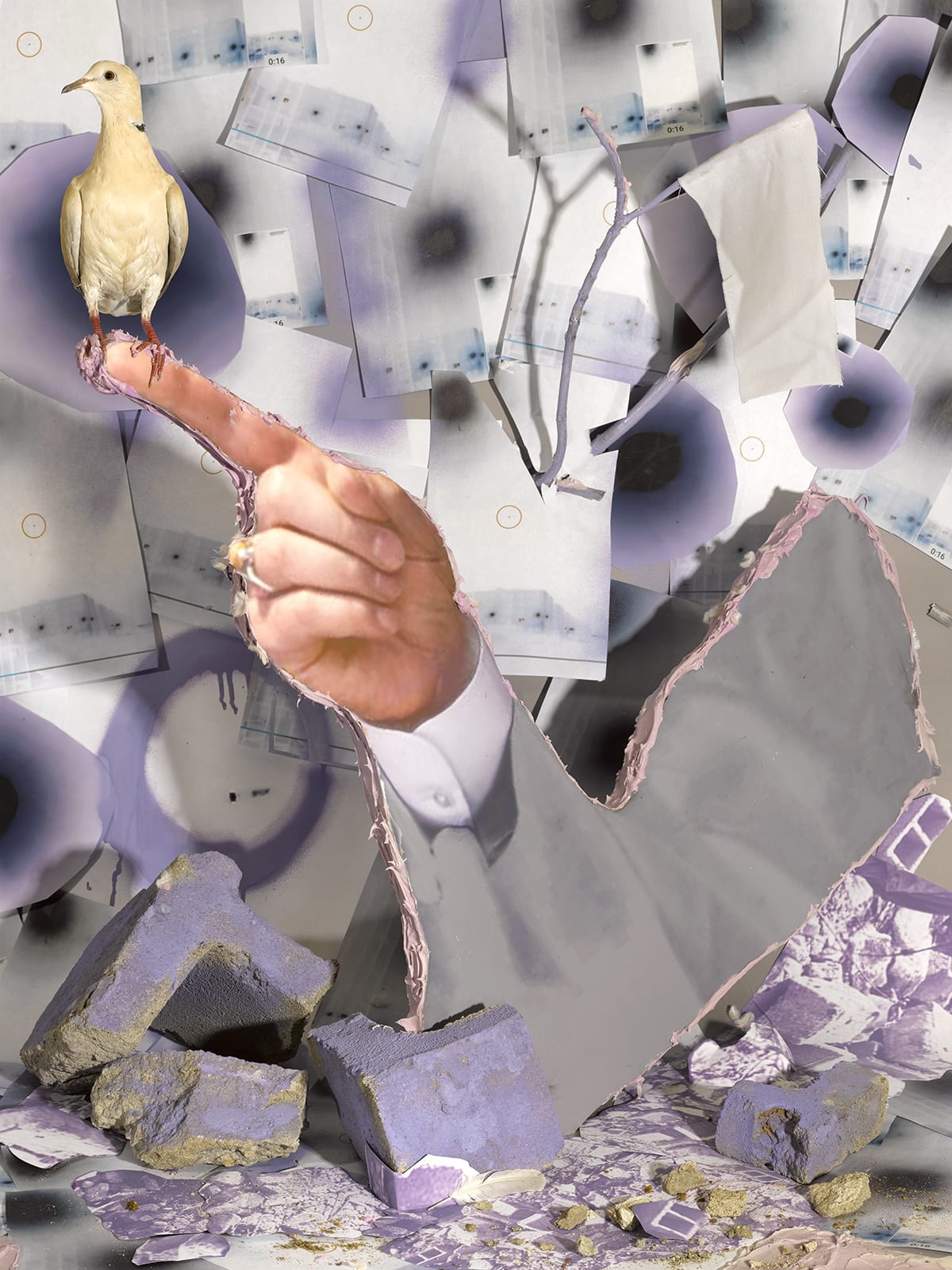03 April 2020 Iranian-American multimedia artist Sheida Soleimani, discusses her wider practice and image making process. Her work functions as an analysis of the correlation between place and time and is part of #6 Perform.

Sheida Soleimani, PS752, 2020
Could you explain your practice and how you work in a few sentences?
Research is central to my practice. When determining how to frame my subject matter, I do a lot of research since I’m interested in finding new ways to represent ‘difficult’ objects within my pieces. I usually begin by printing images I pull off the web, images where violence is front and center, like images showing headshots of dictators, or the faces of victims of torture, and images where violence is often invisible, like landscapes that have served as sites of violence, whether to humans or to the land itself, as in oil extraction. These photographic images correspond to specific aspects of my research, allowing me to think of the piece I’m working on as a story, one which can be read through interactive, sustained engagement with the piece. There is no linear narrative however, as the next step involves collaging my web image archive by overlaying the images onto three-dimensional objects. Sometimes subjects from the images become the actors in my story, playing the roles of dictators, robber barons, and CEOs, with the theatre being a tabletop or larger stage set. I also draw upon the lighting techniques of advertising for inspiration, using strobe lights that add a certain lurid theatricality to the mix.
What one thing has most helped to shape your practice?
My job as a professor. My students constantly push me to reevaluate my surroundings on a daily basis.
Why photography? Why the still image?
Throughout the history of photography as well as photographic portraiture, we have been conditioned to believe that photographs are transparent and faithful representations. We believe that we can deduce one’s gender identity, race, class, and profession, based on what is present within an image. Yet photographs are not self-evident, seeing is not always believing. Through mining the vexed history of this medium, I hope to challenge the gaze of the lens in contemporary image making, in particular by inventing practices that aren’t penetrated by the lens but are intimate, consensual, and ethical. I find still life imagery an important entry point for demonstrating that histories of violence are not always best accessed through images of distress and harm – the pain porn photographers often seem to use to cause shock and awe in the interest of social justice. Still lives suggest we need to reckon with histories of violence passed down through objects, possessions, and things left out of the frame. In all my photos I use the camera to flatten layers within my fabricated sets to confuse the spectator and make them question what is and isn’t real whether in the photo itself or beyond it, an example of this seen in the daily media that we consume.
Where do your ideas begin?
Reframing and warping scenarios taken from the daily news is generally where my sketches start. I listen to a story about the G20 conference and imagine a group of bro’s egging each other on to see who can drink the most oil out of a multi-armed beer bong.
What’s next?
I’ve just started a new series, Reparations Packages, based on the concept of reparations. While Americans invariably think of slavery when they hear that word, I’m thinking a lot about the larger ramifications of the concept, both philosophically and practically, in terms of where else in the globe reparations have taken place. How can one place economic and material value on catastrophe, holocaust, genocide, destruction, and all manners of violence tied to settler colonialism, imperialism, and war? What do “reparations packages” look like? What does it mean to translate a reparations package into visual art?
I also have a solo show coming up at The Fabric Workshop and Museum in 2022, and I will be creating a new body of work focusing on my relationship with my parent’s narratives as political refugees, congruent to my practice of caretaking of displaced wild animals.

